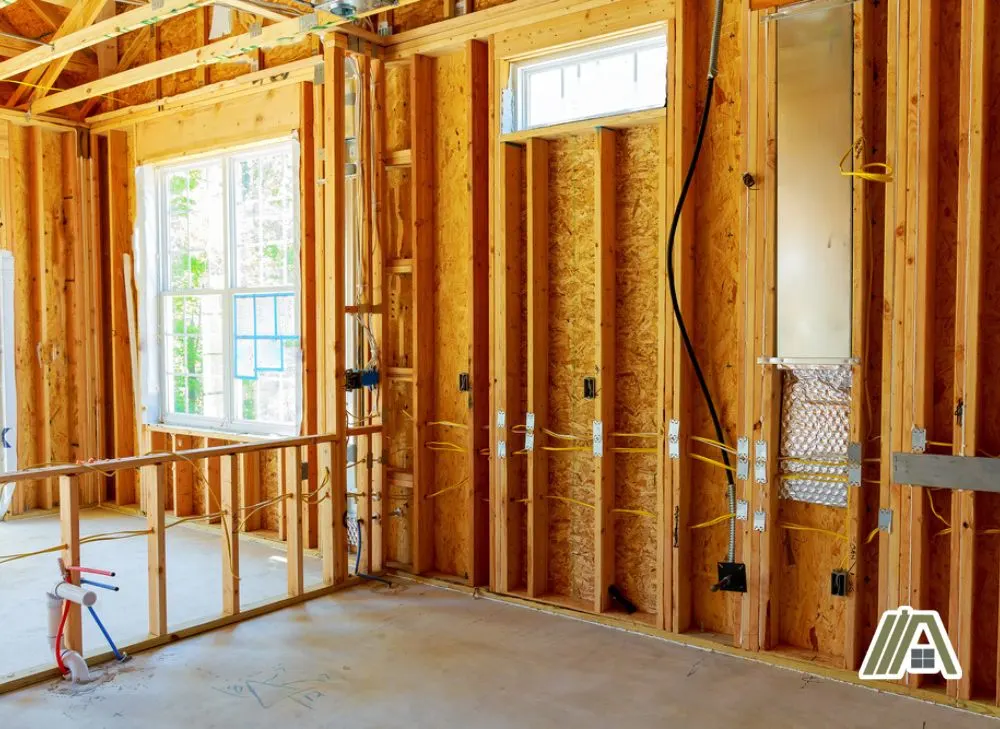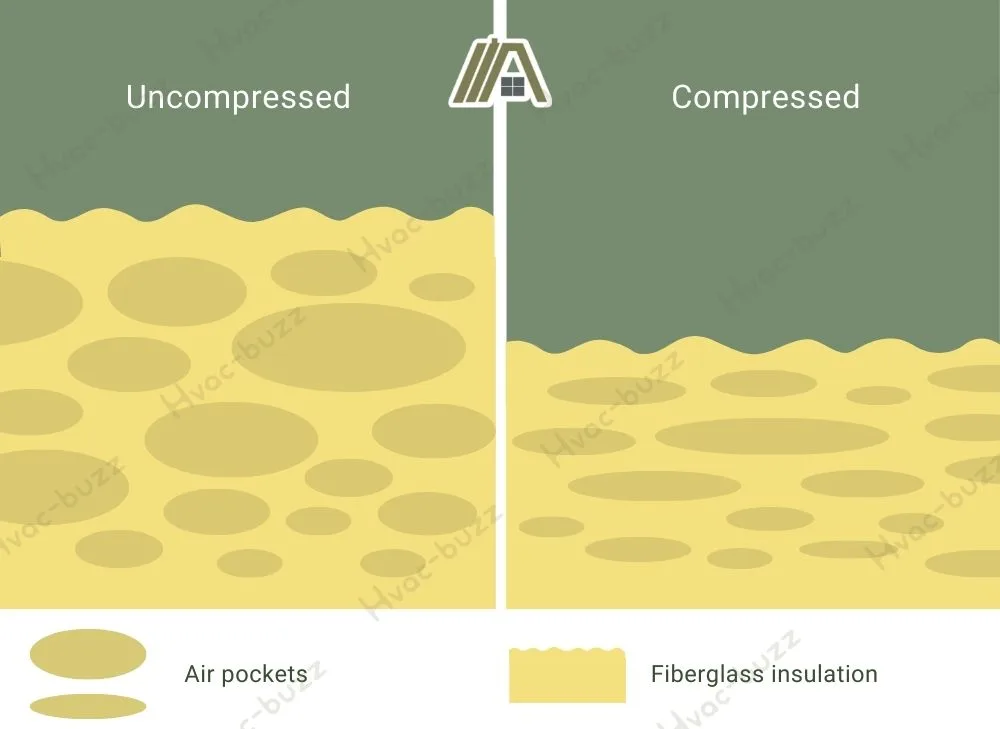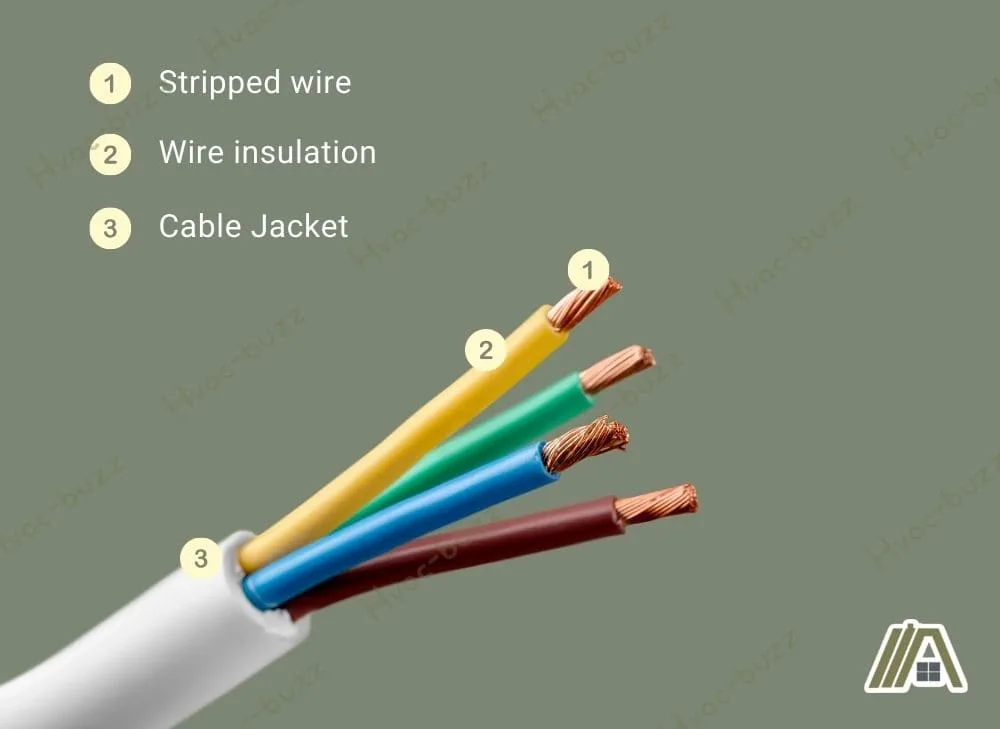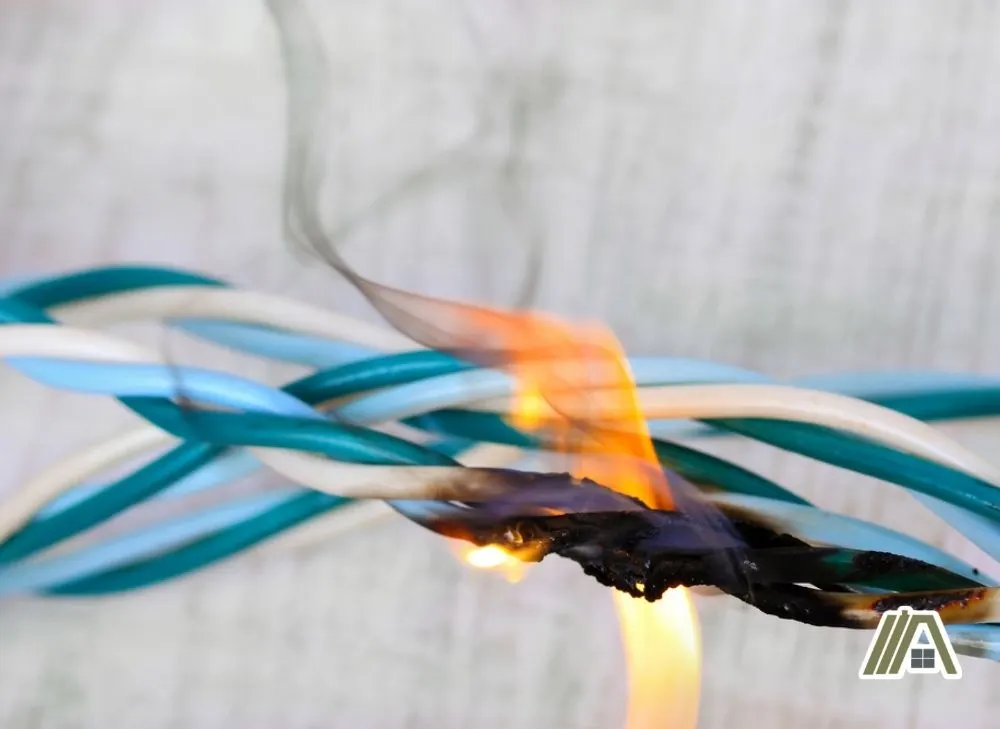Picture this. Your ceiling is installed and looking real tidy. It’s late, but there’s an hour or so before pack-up, and you know you’ll feel like a champion the next day when you remember that you’ve already started on the insulation. You go to grab the first roll but pause when you see the box of new light fittings waiting to be connected.
Now, this may not be your exact scenario, but we can all relate to the sentiment. Either the question never entered our minds until that point or we were sure of the answer until the moment actually arrived. Happily, in this case, the answer is quite simple.

Insulation must be installed over wiring. If there is space below the wiring, it should be installed over and under the wiring as opposed to just under it.
Insulation Goes Over Wiring
Put the fiberglass roll down and get an early night—tomorrow you’ll be tackling wiring!
As I said, the answer is simple, wiring goes under insulation.
This includes junction boxes. You can install insulation over these as long as the insulation is readily moved to allow for easy access.
I understand the argument in favor of the reverse order. Wires are more likely to need adjustment or repair, so putting them on top of the insulation makes them more accessible. Electrical wires can release heat, which would be trapped by the insulation, building up to cause issues.
However, in addition to all the reasons why you should install the wiring first, these problems are readily addressed by the safety measures of wiring design and the requirements for how to install insulation over wiring.
Reasoning Behind This Order
Easier to Do the Wiring First
When wiring is installed before insulation, it can be easier to see where the wires need to be placed and ensure they are installed properly. This is because the wall studs, ceiling joists, and other framing elements are more visible and accessible before insulation is installed.

By installing the wiring first, you can more easily see where the wiring needs to be placed and any holes you may need to drill for the shortest path. The lengths of wire required can be more accurately estimated, which can help reduce material costs.
There is also less need to pull wires through small openings or bend them sharply around obstacles, which can help reduce the risk of damage to your wires. This will ensure that the wiring is installed properly and safely.
Additionally, pulling wires over or around insulation can also cause damage to the insulation itself, which can compromise its effectiveness as a thermal barrier. This can lead to increased energy costs and potentially reduce the lifespan of the insulation.
When you do the wiring before the insulation, you can easily inspect the final product, which can help ensure that it meets electrical codes and is safe for use.
Insulation Must Not Be Compressed
I briefly mentioned above that when you wire above the insulation, the insulation could get damaged. When wires are placed on top of or pushed against the insulation, it can cause the insulation to become compressed.
If the insulation is compressed, it can reduce the R-value (insulating value) of the insulation and increase energy costs. Insulation works by trapping air within its fibers, which slows down the transfer of heat between the inside and outside of a building.
When insulation is compressed, the air pockets within it are reduced, which reduces its insulating properties. This means that compressed insulation will not provide as much resistance to heat transfer, allowing heat to pass through more easily.

Insulation that is compressed can impede the movement of air through the building envelope. This can prevent the insulation from “breathing” or allowing moisture to escape. When insulation cannot breathe, moisture can become trapped within it, leading to a risk of it becoming damp and moldy.
Wires Are Insulated Themselves
When insulating around wires, it’s important to remember the wires themselves are already insulated.
If wires weren’t insulated, there would be a high risk of electrical shock and fire, as well as energy loss in the form of heat and it would make installing insulation over the wires rather a dangerous practice.
Electrical wires are typically made of metal, which is a good conductor of electricity. This means that electricity can flow easily through the wire, which is essential for powering appliances and devices. However, if someone were to touch a live, uninsulated wire, they could be seriously injured or even killed.
Wire insulation serves as a barrier that helps prevent accidental contact with the wire, reducing the risk of electrical shock.

In addition to protecting against electrical shock, the insulation also helps prevent energy losses in the form of heat.
As electricity flows through the wire, some of the energy is lost as heat. Insulation on the wire helps prevent this heat from escaping, which means that more of the energy is used to power the device instead of being lost. It also prevents the wires from overheating and potentially starting a fire.
If you live in an older home, you’ll need to check your wiring carefully before laying any new insulation. Aluminum wiring was commonly used in the 1960s and 1970s, but it has been found to have a higher risk of electrical fires than copper wiring.
Additionally, cloth wiring, which was commonly used in older homes, can also pose a fire hazard due to its age and deterioration over time. If you have any of these wires in your home, you may want to consider replacing them.
Can Ducts Be Buried in Insulation (or Must They Be Insulated Separately)?
Permitted By Code
The International Residential Code (IRC) sets out all the standards and codes you need to follow if you’re building, renovating, or upgrading your home.
When building codes aren’t met, it can create safety hazards and can result in fines, legal liability, and difficulty obtaining insurance.
Table N1102.4.1.1 in the IRC says:
“Insulation shall be installed to fill the available space and surround wiring, plumbing, or other obstructions unless the required R-value can be met by installing insulation and air barrier systems completely to the exterior side of the obstructions.”
This means that even if there is space for the insulation below the wires, you should rather split the insulation to be over and under the wires than to just have it below. But if you can put it all on top, then do this.
Considerations for Covering Wiring With Insulation
Installing insulation over wires should only be done if the wires are in good condition and installed correctly.
However, this doesn’t mean that if they are in poor condition or installed incorrectly that the solution is to put them on top of the insulation. The wiring must be fixed or replaced in these situations.
Wires can still get hot, and it’s important to ensure that they are not overloaded or damaged in any way.

This can be done by ensuring that the wiring is properly sized for the load it will be carrying and that it is installed according to electrical codes and standards.
In addition, you should also make sure the wiring is accessible for future maintenance or repairs. You achieve this by using insulation that can readily be moved, like batt or loose-fill.
Using spray foam insulation would, therefore, not be a good choice as once spray foam sets, it is difficult to remove, and you will end up having to re-insulate large areas or the whole of your attic space.
The most recommended insulation to use would be fiberglass batts. These are easy to install and are not flammable. You can cut them to the size you need, and even split them in half, laying one half behind the wiring and the half on top, giving you easy access to the wires without compromising your insulation.
Insulation Touching Copper Pipes | Is It Up to Code? (and safe)
Sources
https://alphabuildinginspections.com/cloth-wiring/
https://atkinsoninspection.com/can-you-lay-insulation-over-electrical-wires-in-the-attic/
https://www.loftzone.co.uk/blog/why-is-your-insulation-failing/
